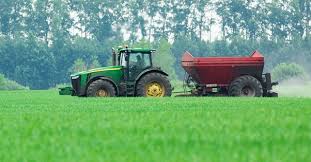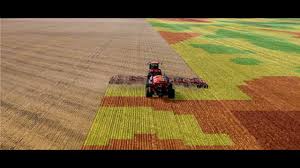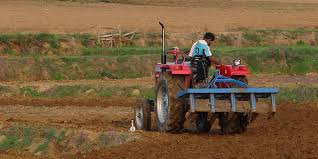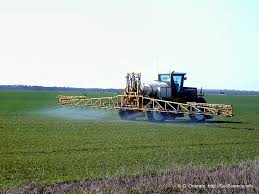Variable Rate Technology (VRT) in agriculture is an innovative approach that allows farmers to apply inputs such as seeds, fertilizers, water, and pesticides in precise amounts, tailored to specific areas within a field. This technology helps optimize the use of resources, enhance crop production, and reduce environmental impacts.
VRT is often paired with precision farming methods, where farmers use data from sensors, GPS, and drones to monitor field variability, like soil health, crop conditions, and weather patterns. Based on this data, VRT adjusts the application rates of inputs in real time, making the farming process more efficient and cost-effective.
One of the key benefits of VRT is its ability to improve crop yields while lowering input costs. Instead of applying the same amount of fertilizer or water across an entire field, VRT enables farmers to apply the right amount where it is needed most.
This reduces waste and ensures that crops receive the necessary nutrients to grow optimally. Additionally, by preventing overuse of inputs, VRT helps minimize environmental damage, such as nutrient runoff, soil degradation, and water pollution.
VRT is widely used in several aspects of crop management. For example, in fertilization, VRT can assess soil nutrient levels and adjust fertilizer application to match the specific needs of different areas. In irrigation, VRT systems can apply varying amounts of water to ensure that each part of a field gets the ideal amount, preventing water waste and promoting healthier crops.
The technology is also used in seeding, where it ensures that seeds are planted at optimal depths and spacing for better germination and growth. Even in pest and disease management, VRT allows for targeted pesticide application, reducing the need for widespread chemical use and lowering the risks associated with pesticide exposure.
VRT can be categorized into two main types: map-based and sensor-based systems. In map-based VRT, pre-existing data maps of a field are created using GPS, satellite imagery, or soil sampling data. These maps are then used to guide the application of inputs at different rates across the field.
Sensor-based VRT, on the other hand, uses real-time data from sensors placed in the field or on farming equipment. These sensors continuously collect information about soil conditions, crop health, or weather, allowing the system to adjust input levels on the go.
While Variable Rate Technology has numerous advantages, its adoption is not without challenges. High initial costs, the need for technical expertise, and access to reliable data are some barriers that farmers may face. However, as technology advances and becomes more affordable, the use of VRT is expected to grow, making it an integral part of modern agriculture. By enabling farmers to use resources more efficiently and sustainably, VRT plays a vital role in increasing food production to meet the growing global demand, while also helping to protect the environment for future generations.
Key Components of Variable Rate Technology

1. GPS (Global Positioning System): Provides precise location data, enabling the technology to map field variability and ensure accurate application of inputs like fertilizers and pesticides.
2. Sensors: Measure real-time conditions such as soil moisture, nutrient levels, and crop health, enabling automated adjustments in the field.
3. Variable Rate Controllers: Devices that regulate the application of inputs based on sensor data and GPS mapping, allowing for precise and targeted delivery.
4. Application Equipment: Specialized machinery (tractors, sprayers, spreaders) equipped with variable rate technology to adjust input levels such as water, seeds, or chemicals in real time.
5. Data Management Software: Used to analyze collected data from sensors and GPS, helping farmers make informed decisions about input application rates and timing.
Types of Variable Rate Technology Systems
1. Map-Based Variable Rate Technology: Utilizes pre-generated prescription maps based on soil tests, yield data, and other collected data to apply inputs at varying rates across different field zones.
2. Sensor-Based Variable Rate Technology: Uses real-time data collected from sensors in the field to adjust the application of inputs like fertilizers or water as the machinery moves through the field.
3. Manual Variable Rate Technology: Involves the manual adjustment of machinery settings based on predefined maps or farmer expertise, offering some flexibility without full automation.
4. Automated Variable Rate Technology: Fully automated systems use data from sensors, GPS, and software to adjust the rate of inputs without human intervention, ensuring precision and efficiency.
The Role of Sensors in Variable Rate Technology
1. Soil Sensors: Measure properties such as moisture, nutrient levels, and temperature, providing real-time data for adjusting irrigation, fertilizer application, and other inputs.
2. Crop Health Sensors: Use optical or multispectral imaging to assess crop vitality, stress levels, or chlorophyll content, allowing precise adjustments in nutrient or pesticide application.
3. Proximity Sensors: Detect the position of machinery relative to crop rows or field boundaries, ensuring accurate and targeted delivery of inputs.
4. Weather Sensors: Collect data on environmental conditions like temperature, humidity, and wind speed, which influence the timing and rate of input application.
5. Yield Monitoring Sensors: Installed on harvesters, these sensors track the amount of crop yield per area, which can then be used to inform future input applications for optimal growth.
Applications of Variable Rate Technology in Crop Management
1. Fertilizer Application: Allows farmers to apply fertilizers at variable rates depending on soil nutrient levels, reducing waste and improving crop health and yields.
2. Precision Irrigation: Sensors and controllers adjust water distribution in different parts of the field, conserving water while ensuring crops receive the right amount of moisture.
3. Pesticide and Herbicide Application: Variable rate technology enables the precise application of chemicals where pest pressure is highest, reducing the overall amount of pesticides used and minimizing environmental impact.
4. Seed Planting: Enables precise seed placement and varying seeding rates across the field based on soil conditions, optimizing plant density and improving yields.
5. Crop Monitoring and Data Collection: Sensors provide continuous real-time data on crop growth and health, which helps in making informed decisions on resource allocation and maximizing farm efficiency.
Read Also: What are the Differences Between Broccoli and Cauliflower?
Benefits of Variable Rate Technology for Farmers

1. Increased Efficiency: Farmers can apply inputs like fertilizers, seeds, and water more precisely, reducing waste and ensuring optimal use of resources across different parts of the field.
2. Cost Savings: By applying inputs only where and when they are needed, farmers can reduce the amount of fertilizers, pesticides, and water used, lowering overall input costs.
3. Enhanced Crop Yields: Targeted application of nutrients and water ensures crops receive the right conditions for growth, leading to healthier plants and higher yields.
4. Environmental Sustainability: Reduced use of chemicals and water helps minimize runoff, pollution, and soil degradation, contributing to a more sustainable agricultural practice.
5. Data-Driven Decision Making: Variable rate technology provides real-time data that helps farmers make informed decisions, improving management practices and reducing guesswork.
6. Labor Reduction: Automation in variable rate systems decreases the need for manual adjustments, reducing labor costs and increasing operational efficiency.
7. Improved Profitability: With higher yields, reduced costs, and more efficient resource use, farmers can see improved profitability and a better return on investment.
Precision Fertilizer Application Using Variable Rate Technology
1. Targeted Nutrient Delivery: Variable rate technology ensures fertilizers are applied at different rates across the field based on soil nutrient needs, preventing over-fertilization and nutrient depletion.
2. Reduced Waste: By applying fertilizers only where necessary, waste is minimized, cutting down on excess fertilizer runoff that can harm the environment and water supplies.
3. Improved Soil Health: Balanced nutrient application improves soil structure and fertility over time, contributing to long-term productivity and sustainability.
4. Enhanced Crop Health: Crops receive the correct amount of nutrients they need for healthy growth, leading to more uniform development and better overall plant health.
5. Cost Efficiency: Farmers save money on fertilizers by reducing over-application, helping them invest in other areas of the farm and improve overall productivity.
6. Minimized Environmental Impact: Lower fertilizer runoff and reduced chemical use help mitigate negative environmental effects, protecting nearby ecosystems and water bodies.
7. Real-Time Adjustments: Sensors and GPS allow for adjustments to be made in real-time as conditions in the field change, ensuring the precise application of fertilizers throughout the growing season.
Variable Rate Seeding: Optimizing Crop Yields
1. Customized Seeding Rates: Variable rate seeding technology allows farmers to plant seeds at different densities across the field, optimizing plant population based on soil conditions and moisture levels.
2. Maximizing Yield Potential: By adjusting seeding rates for each area of the field, farmers can ensure that every part of the field is used effectively, leading to higher overall yields.
3. Efficient Seed Use: Seeding at variable rates prevents over-seeding or under-seeding in areas with differing soil fertility, reducing waste and ensuring even crop growth.
4. Improved Plant Health: Proper seeding density improves airflow, reduces competition for nutrients, and lowers the risk of diseases, helping plants grow healthier and more robust.
5. Enhanced Soil Utilization: Different parts of the field have varying levels of fertility and water retention; variable rate seeding ensures seeds are placed in the right spots for optimal growth.
6. Cost Savings: Farmers can save money by reducing seed wastage and ensuring better crop performance, leading to a more cost-effective planting process.
7. Better Adaptation to Field Variability: Variable rate seeding accounts for differences in soil texture, moisture, and nutrient availability, helping to maximize yield potential in every part of the field.
The Impact of Variable Rate Technology on Water Management
1. Precise Water Application: Variable rate technology (VRT) helps farmers apply water exactly where it is needed, adjusting irrigation levels across different zones of the field to meet specific moisture requirements. This prevents over- or under-watering in any area.
2. Reduced Water Usage: By accurately distributing water based on soil moisture levels and plant needs, VRT minimizes water waste, allowing farmers to conserve water, which is especially critical in areas facing water scarcity.
3. Improved Crop Health: With balanced water application, crops receive the optimal amount of water for growth, leading to healthier plants and reduced water stress, which can improve overall yields.
4. Minimized Runoff and Erosion: Precise irrigation ensures that excess water doesn’t flow off fields, preventing soil erosion and reducing the risk of nutrient runoff into nearby water bodies.
5. Better Drought Management: During drought conditions, VRT allows farmers to carefully manage limited water supplies by prioritizing critical zones for irrigation, improving resilience to dry spells.
6. Lower Energy Costs: Efficient water use reduces the amount of energy required for pumping and distributing water, helping farmers lower operational costs.
7. Enhanced Monitoring: Sensors integrated into VRT systems continuously monitor soil moisture, allowing for real-time adjustments that ensure optimal water management throughout the growing season.
Read Also: Bovine Spongiform Encephalopathy: Description, Damages Caused, Control and Preventive Measures
Challenges and Limitations of Variable Rate Technology

1. High Initial Costs: The setup costs for variable rate systems can be expensive, including equipment, software, and sensors, which may limit adoption by smaller farmers with limited capital.
2. Complexity of Operation: Variable rate technology requires technical knowledge to operate and interpret data, making it challenging for farmers without sufficient training or access to skilled labor.
3. Inconsistent Results: In some cases, variability in the field can be too complex for the technology to manage effectively, leading to inconsistent or suboptimal results in terms of input application.
4. Limited Data Availability: Successful use of VRT relies on accurate, high-quality data. In regions where access to field mapping and real-time data collection is limited, the effectiveness of VRT can be compromised.
5. Compatibility Issues: Existing farming equipment may not always be compatible with VRT systems, requiring additional investments in new machinery or retrofitting older equipment, which can be costly.
6. Maintenance and Upkeep: VRT systems need regular maintenance to ensure they function correctly. Sensors, GPS units, and software updates can be difficult to manage for farmers unfamiliar with the technology.
7. Return on Investment (ROI): While VRT can reduce costs and improve yields, the ROI may take time to materialize, especially in small-scale operations, making it a less attractive option for some farmers.
The Future of Variable Rate Technology in Sustainable Agriculture
1. Enhanced Precision and Automation: As technology continues to evolve, variable rate systems will become more accurate and autonomous, reducing the need for manual intervention and improving the precision of resource application.
2. Integration with AI and Machine Learning: Future advancements in AI and machine learning will enable VRT to analyze complex datasets more effectively, leading to even smarter decision-making based on crop health, soil conditions, and weather patterns.
3. Expanded Use of Remote Sensing: The use of drones and satellite imagery will allow for more detailed field analysis, helping farmers monitor their crops from above and further optimize the use of water, fertilizers, and other inputs.
4. Lower Costs and Wider Accessibility: As VRT becomes more widespread, the cost of equipment and software is expected to decrease, making it more accessible to smallholder farmers and driving adoption across different agricultural regions.
5. Climate Resilience: Variable rate technology will play a key role in helping farmers adapt to the effects of climate change by optimizing resource use in increasingly unpredictable environmental conditions.
6. Sustainable Resource Management: As part of the broader movement towards sustainable agriculture, VRT will help reduce chemical runoff, conserve water, and improve soil health, supporting efforts to make farming more eco-friendly and sustainable.
7. Data-Driven Agriculture: The future of VRT lies in fully data-driven agriculture, where real-time information and predictive analytics enable farmers to make informed decisions, improving yields and sustainability while minimizing environmental impacts.
Do you have any questions, suggestions, or contributions? If so, please feel free to use the comment box below to share your thoughts. We also encourage you to kindly share this information with others who might benefit from it. Since we can’t reach everyone at once, we truly appreciate your help in spreading the word. Thank you so much for your support and for sharing!
Read Also: How to Control Pests in the Garden
Frequently Asked Questions
We will update this section soon.

